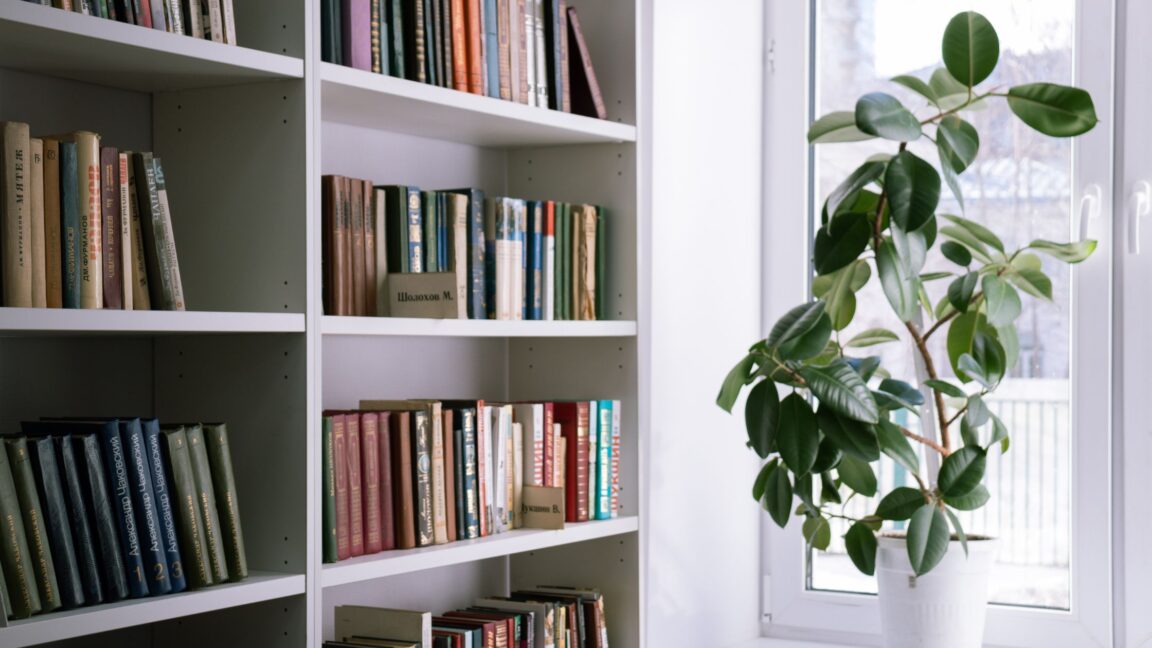Do you want to learn more about indoor plants? You’ve come to the correct location!
Did you know that keeping plants in your home might make you feel better? That is correct! Indoor plants have been shown to benefit your immune system, increase productivity, enhance relationships, and even improve your mental health! Having plants does not have to be difficult.
Plants enhance air quality, add beauty to your house, and increase mental and spiritual well-being by allowing you to care for something. Plants in your bedroom may enhance your sleep quality, while greenery in your kitchen might help lighten up your area if you don’t have a window.
With this handy guide, you can enjoy all of the advantages of owning indoor houseplants and become a plant lady in no time!
- Snake Plant
One of the fascinating plants to have is the Snake Plant. It’s a lovely plant with a one-of-a-kind appearance! According to research, the Snake Plant is the MOST oxygen-producing indoor plant, which is a big advantage. Not only that, but the Snake Plant is excellent for air purification.
This plant will flourish in full sun, shade, and without water (so it thrives on neglect). As a result, this houseplant is a must-have! It aids in the absorption of poisons such as carbon dioxide, formaldehyde, and benzene.
- Rubber Plant
The Rubber Plant is a lovely addition to any decor. It has highly lovely foliage, making it an excellent focal piece in your house. Its big leaves attract toxins like germs and mold spores, effectively cleaning your property for you.
A Rubber Plant’s soil should be kept wet but not saturated. It also works great in bright natural light! If you’re patient, this is a fantastic plant to purchase young since it will adapt quickly to its surroundings.
- Spidar Plant
If you have a brown thumb rather than a green thumb, the spider plant is an excellent choice for you! It’s a lovely hanging plant that is ideal in every aspect. It thrives in low light, moderate sunshine, and brilliant, indirect sunlight. It is remarkably adaptive to over- and under-watering.
Some types of this small jewel generate more chlorophyll than most other houseplants, implying that they create more oxygen. If that isn’t enough, this indoor plant is also pet-friendly! Even one research claimed the spider plant removed 95% of harmful substances from the air.

- Dracaena Marginata
The Dracaena Marginata is a very appealing plant with a lot of character! It’s one of the hardest plants around. Even when you believe you’ve neglected this creature to death, it miraculously returns to life with a little TLC.
This plant just needs a little amount of water and sunshine to thrive. This plant is also on NASA’s list of air filtration plants (as part of the NASA clean air research), which decreases benzene, formaldehyde, xylene, and toluene levels in the air.
- Aloe Vera
To put it mildly, Aloe Vera is a mini-superhero. It’s a lovely succulent that prefers bright light. It is excellent at absorbing moisture, making it an excellent choice for your bathroom. It’s also really simple to stay alive! This super plant emits oxygen and absorbs carbon dioxide at night, making it an excellent air cleaner.
Aloe is also beneficial for burns and skin irritation. It may be used as a hair mask, skin moisturiser, shaving gel, and, yes, even in smoothies!
- ZZ Plant
The ZZ Plant is a lovely, traditional favourite! This plant is fashionable, appealing, and easy to care for. This magnificent plant is particularly effective in removing pollutants such as benzene, xylene, and toluene, making it an ideal plant for a healthy household. It thrives in low light and just requires watering every two weeks.
- English Ivy
English ivy is one of the most gratifying plants to cultivate indoors. It is a lovely, fast-growing, bright-light houseplant that would look lovely in a bedroom or living room. This plant favours somewhat dry soil over moist soil, which is ideal if you want a low-maintenance plant.
It is well-known for its anti-inflammatory, antioxidant, antiviral, and antiarthritic effects. English ivy is the ideal plant to enjoy for many years!
- Majesty Plan
Majesty Palm is a lovely tropical plant that complements any design! It’s shockingly simple to stay alive. For best results, keep this plant properly hydrated and near a sunny window. Use this plant to cleanse the air in your house and eliminate carbon dioxide. It’s an excellent plant for keeping your house looking attractive and healthy!
- Pothos Ivy
Pothos Ivy is most likely the simplest plant to grow! This is a lovely hanging plant that may be cut and replanted to produce other plants. It can flourish in low light conditions and just requires water every couple of weeks. Pothos Ivy is an excellent plant for purifying the air. It cleans the air while providing us with the oxygen we need. This plant comes highly recommended as a first-time indoor plant!
- Gerbera
NASA discovered that the Gerbera daisy is the most efficient plant in removing benzene from the air. Gerbera daisies, like snake plants, are recognized for their capacity to absorb airborne chemicals and create oxygen at night, which may aid patients suffering from sleep apnea, according to the Lung Institute.

Final Verdict!
The indoor plant you choose should be suitable for your lifestyle and interests. Having a plant is a learning experience that might be stressful if you’re new to it or have a lot on your plate. It may be comforting to watch them develop, generate tranquil sentiments, and give a contemplative experience.
If you’re just starting out as a plant parent, choose something low-maintenance. Some of the greatest indoor plants for increasing oxygen levels and cleaning the air include snake plants, spider plants, rubber plants, peace lilies, ferns, and English ivy.
When it comes to determining what will grow in your house, you should consider how much light your room receives. Plants have relatively particular lighting demands, so choosing a plant that’s suited to your light level means it will thrive.




GIPHY App Key not set. Please check settings